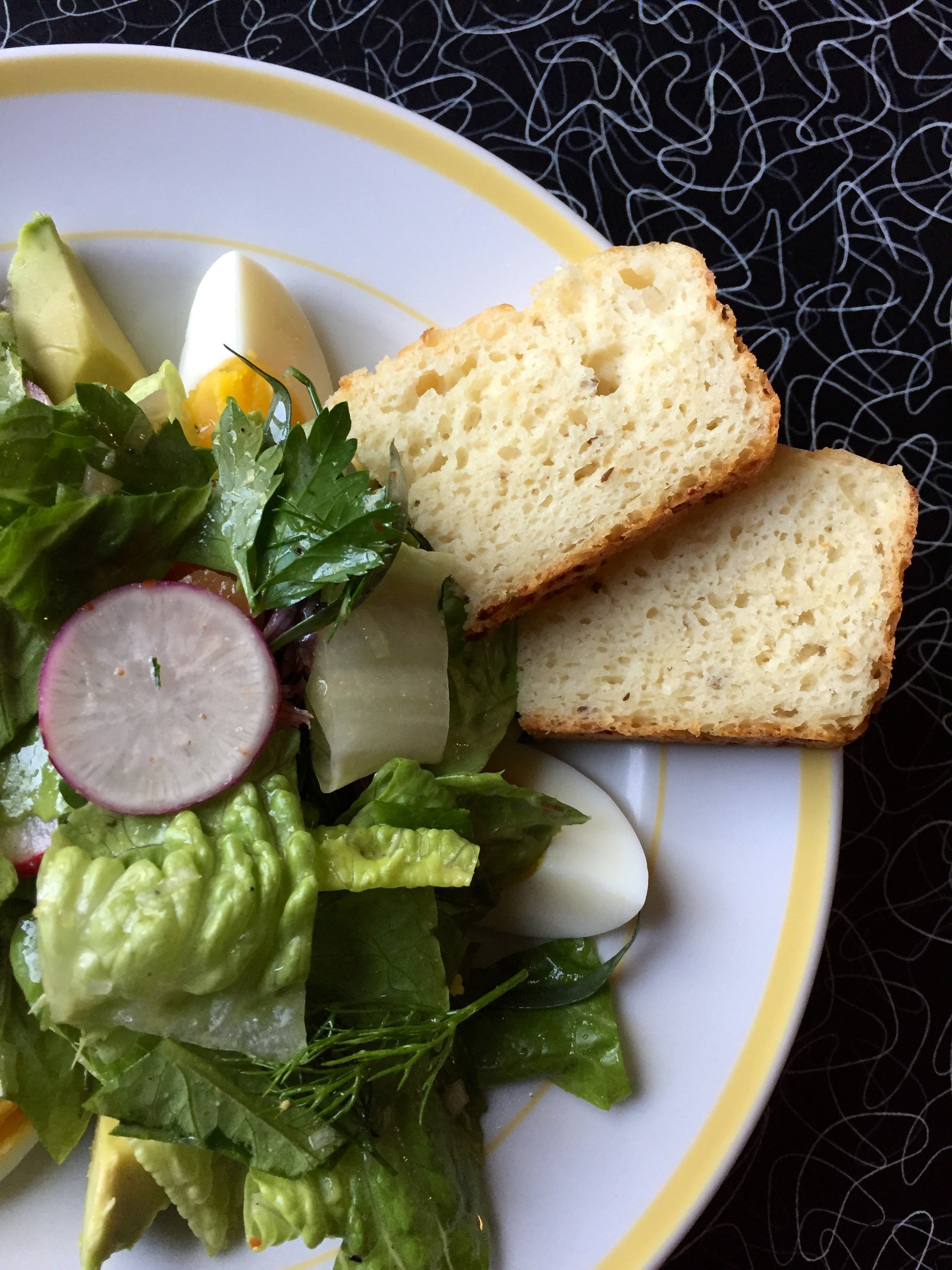Dilly bread
Cooking is one of those things that is never learned in a vacuum. You do not learn it solely from books or blogs or television shows; you learn it from people. They impart their knowledge, their wisdom, and their sense of taste, and you internalize that.For many of us, of course, much of this wisdom comes down generationally. For those who cook professionally, they learn in a school or on the job. Those of us who are passionate about food tend to learn from each other. It is our bond.This recipe comes to us from a dear friend, who is in turn passing on a piece of someone dear to her, a colleague named Tom. Tom was an engineer, but also an avid home cook and pioneering food blogger. He would throw lavish dinner parties for his birthday, collecting his crew of fellow cooks to work with him. He was our friend's mentor both at the office and in the kitchen.This bread was his comfort food, something his mother used to make for him. He would make it when he was vexed by a problem, either professionally or personally. He'd also make it for friends if they were sad or stressed out. It's not hard to see why. When this bread comes out of the oven, its aroma erases any cares in the world.Tom passed away in 2008. We never met him, but his influence lingers on in his friends, in our friend. A recipe from a man we've never known has made it into our repertory. The cycle continues.When Jerry James Stone asked me to participate in Three Loaves, this recipe sprang to mind for three key reasons. First, because it has significance. Second, because it's delicious. Third, and most importantly, because it's easy. I am not a confident baker, so I gravitate toward recipes that are, simply, hard to screw up.The recipe scales linearly. The original makes two loaves, so I've scaled for three. According to our friend, each loaf can also be broken out into three mini loaves, though the baking time will be shorter. Serve slices warm, slathered with butter, or alongside a lovely spring salad.
Dilly Bread
Adapted and scaled from Butter Pig 3 packages rapid-rise yeast3/4 cup warm water3 cups small-curd cottage cheese3/8 cups melted unsalted butter, cooled3 eggs3 teaspoons dill seed4 1/2 tablespoons dried onion flakes1 tablespoon salt6 cups flourPreheat the oven to 350°F.Add the yeast to the warm water, and proof for 5 minutes.Meanwhile, combine the cottage cheese, melted butter, eggs, dill seed, onion flakes, and salt in a stand mixer bowl with a paddle attachment. Mix until fully combined.Add the yeast, and mix well.Add the flour, and mix until a batter comes together. It will be sticky. Cover, and let rise until doubled.Divide in three, and place in greased 9" loaf pans. Cover, and let rise again until doubled.Bake at 350°F for 35-45 minutes, or until browned.Remove from the pans. Brush the tops with butter, and scatter coarse salt over. I'm particularly fond of this salt that I bring back from Romagna. (Shameless plug: Yes, I lead culinary tours in Italy! Join me in October to learn to make hand-rolled pasta, piadina and preserves; visit a truffle festival; go foraging for porcini—or maybe truffles—and more! Sign up today.)
3 packages rapid-rise yeast3/4 cup warm water3 cups small-curd cottage cheese3/8 cups melted unsalted butter, cooled3 eggs3 teaspoons dill seed4 1/2 tablespoons dried onion flakes1 tablespoon salt6 cups flourPreheat the oven to 350°F.Add the yeast to the warm water, and proof for 5 minutes.Meanwhile, combine the cottage cheese, melted butter, eggs, dill seed, onion flakes, and salt in a stand mixer bowl with a paddle attachment. Mix until fully combined.Add the yeast, and mix well.Add the flour, and mix until a batter comes together. It will be sticky. Cover, and let rise until doubled.Divide in three, and place in greased 9" loaf pans. Cover, and let rise again until doubled.Bake at 350°F for 35-45 minutes, or until browned.Remove from the pans. Brush the tops with butter, and scatter coarse salt over. I'm particularly fond of this salt that I bring back from Romagna. (Shameless plug: Yes, I lead culinary tours in Italy! Join me in October to learn to make hand-rolled pasta, piadina and preserves; visit a truffle festival; go foraging for porcini—or maybe truffles—and more! Sign up today.)

